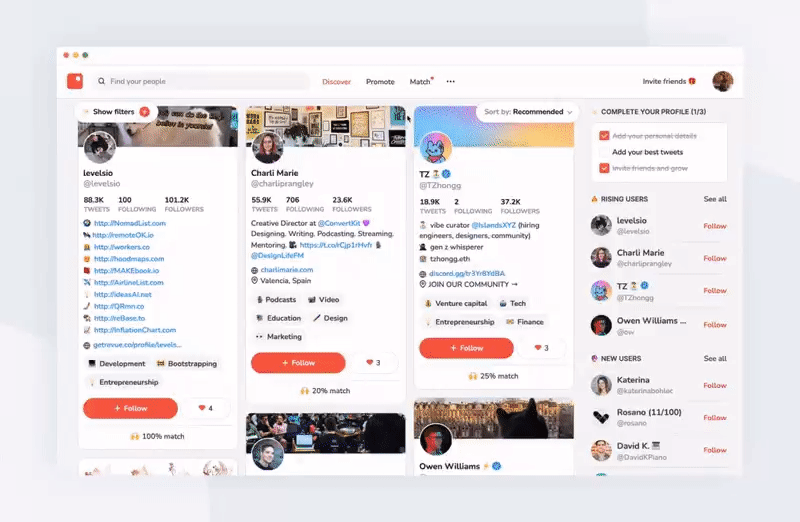Transitioning from Product Manager to a Founder
Or founder to PM. What does a Product Manager do? How to get started for the role? - with Yihui
Hey everyone👋, welcome to the 22nd newsletter.
As a Product Manager, you’ll be pulled in all directions and will be keeping a balance between what helps ship a successful product and achieve the long-term goals.
PM discovers a market opportunity by talking to the customers and partnering with the team during day-to-day work. Not only the PM creates a strategy to win the market, but understands the customers, test prototypes, and work with the marketing team to launch the product successfully.
Many will say a PM’s role is similar to that of a founder or vice versa. But being a PM isn’t similar to becoming a founder. Actually, if you look closely both of the jobs are different. As a founder, if your company wins, you also succeed. You fill the company’s vision & goals.
Whereas, a PM is looked as someone who keeps things running smoothly, collaborates with teams, avoids chaos and executes, and also complies with the company’s vision & goals.
This month I have a very special guest, Yihui, who is a Product Manager and has founded products with no-code - VSJO & Buttermilk. Here she’s sharing her experience as a PM.
Ritika: How would you overall describe your role and your experience as a PM?
Yihui: As a one-liner, I guide and work together with the team to identify and solve customer problems that can deliver a business impact.
Ritika: How did you get into the PM role? Was it what you wanted to do & what advice would you give to people getting started?
Yihui: I was in digital marketing at first. I got interested after learning about UX and went into a rabbit hole researching the product route. I wanted to be more involved in building the product, rather than only focused on the marketing and shipping out an already finished product.
It took me a while before I landed a PM role because many applications required technical experience which I did not have. I joined a local PM community where I connected with other PMs and got referred to my first role.
One advice I’d give is to build your own side project. You can easily do that with no-code tools. Once you do, you can build a case study to talk about your thought process of solving a problem. Show and tell.
Ritika: Absolutely, what’s better than showing your wins. So, how do you start a new project, how do you break down things, create a roadmap, and start working on it?
Yihui: Go into a mini design sprint.
Identify the goals of the project
Analyze what we know, ie the feedback we have gotten from customers
Scope out all the possible features
Competitive research
Descope the ones we need now
Design starts
Design feedback with product and developers
Once designs are ok, break the features down and create tickets for the developers. Be sure to write out specs and requirements before the developers start work.
Ritika: What keeps the whole team together & work in synchrony?
Yihui: The PM should align the team with the priorities of each sprint. Before a new sprint starts, discuss with the dev leads of each team to check where the team is at on the current sprint and prepare together for the next sprint.
At the same time, daily standups help to align what everyone is working on each day to ensure on the right track.
Ritika: How do you make sure that the whole team meets the deadline & things go out smoothly?
Yihui: Priorities. Sometimes there might be ad-hoc tasks that come up or an urgent bug issue. We can feel tempted to jump on those issues, but the PM should be quick to identify and prioritize if it’s necessary to work on those issues in the current sprint. Is it aligned with the sprint goal? Even if it is, it might be out of the scope of the current sprint. So best to put it into the next sprint for now.
If it’s not incredibly urgent, it can wait till the next sprint to be planned in. End of the sprint Retrospective sessions helps to reflect on bug issues or ad-hoc tasks.
For every sprint, it’s good to buffer at least some % for ad-hoc items such as meetings, bug investigations. At my past company, we buffered around ~20%
PM should try to ensure the requirements of each ticket or documentation is ready for the developers before the sprint starts. Otherwise, questions may arise in the middle of the sprint and might take up time.
Ritika: This leads me to, was there any time when you worked under pressure?
Yihui: Yes, mostly to project manage different items on my to-do lists.
Ritika: What's involved in your decision-making process?
Yihui: Is this something that’s part of our vision and roadmap? If it is, plan accordingly. If it isn’t, briefly evaluate its impact and effort needed, and identity if it can be a quick win. If not, plan for later. Prioritize based on the product vision.
At the same time, we want to evaluate the problems that our customers are facing and how they may relate back to our product. For example, if our product is Instagram and we have been getting “problems” that our customers are not able to post status updates (in text) on the Instagram feed like Twitter. While it *might* solve the problem of a subset of customers, Instagram is mainly a visual-based platform. Adding the status update feature does not serve its main purpose.
Ritika: As you’ve created several products with no-code, how do you consider transitioning from PM to founder?
Yihui: PM is just the start. Ultimately you’ll still have to answer to your boss or your CEO. As a solo founder, you’ll have to quite literally build your own product, design, develop, get customers, do your own marketing, monetize, etc. It might feel lonely working solo, but with the right community, you’ll be able to seek out help and connect with other builders and founders alike.
Here are in-depth 4 key lessons Yihui shared to become a better product manager.
Some musings 🥁
Product management 101:
A crazy story why you shouldn’t give up.

You’re flaws & imperfections contribute to your growth over time.
The 9 important lessons I learned after failing a product.
Here’s why your team might be hating Product Managers.
If you’re serious about getting into the PM role, read Lenny’s newsletter.
Alyssa X created this really amazing product called CreatorScout - Discover Twitter followers with the same interests as yours. If you’re an avid Twitter user, you really need to try this out.


Until next time! 👋
👋 PS: I’m Ritika founder, product marketer and advisor for early-stage startups, find more here or connect with her here. If you’re a first-time founder looking for curated resources, download here. If you enjoyed this post, read the past issues here. You can also promote your product in this newsletter.
A big thanks for reading & sharing!







